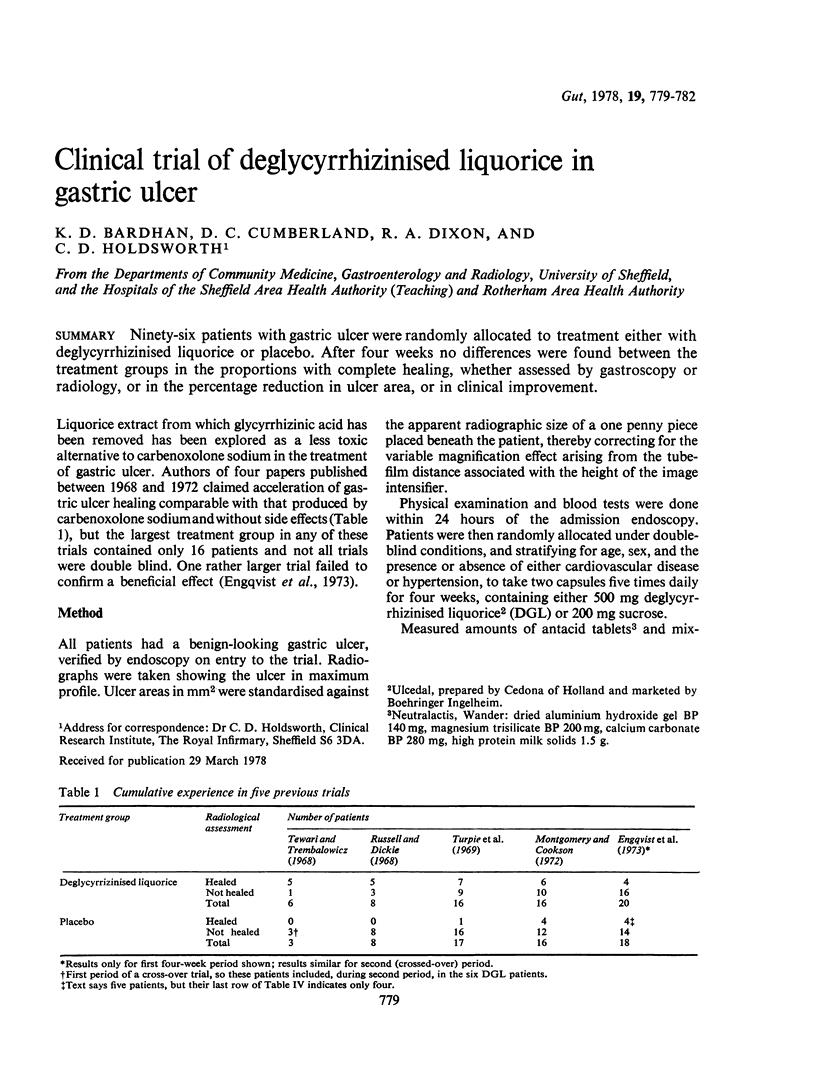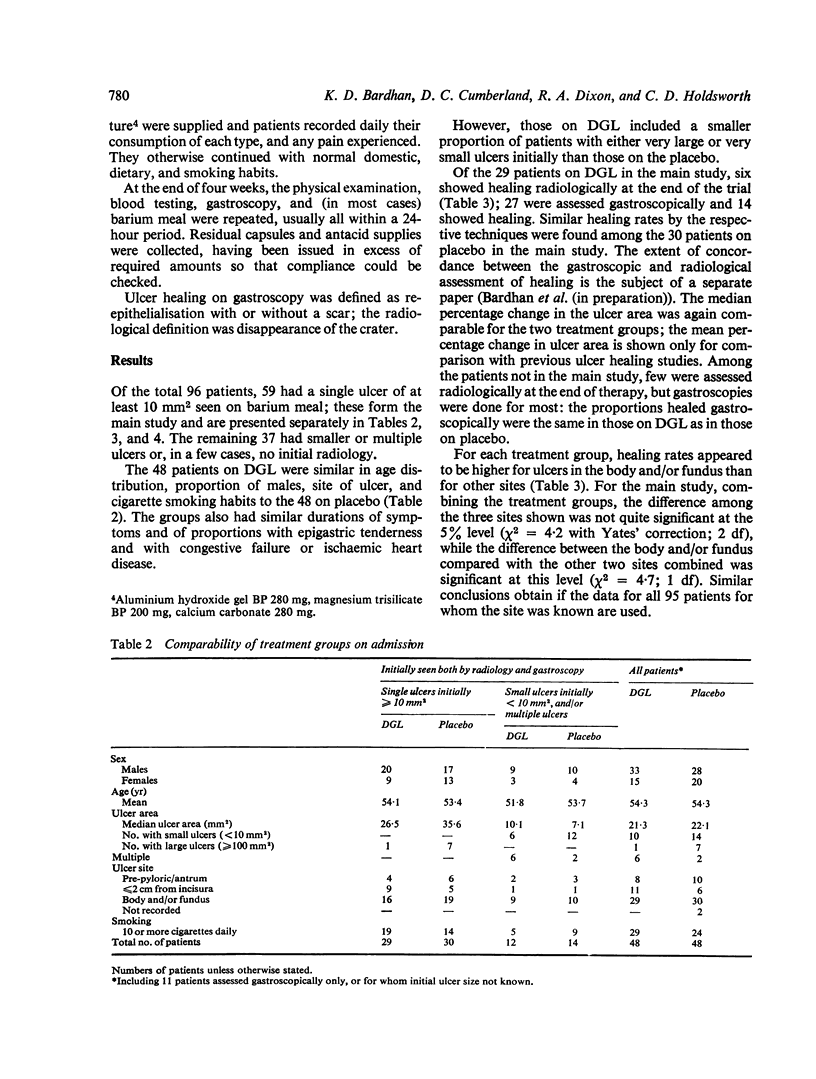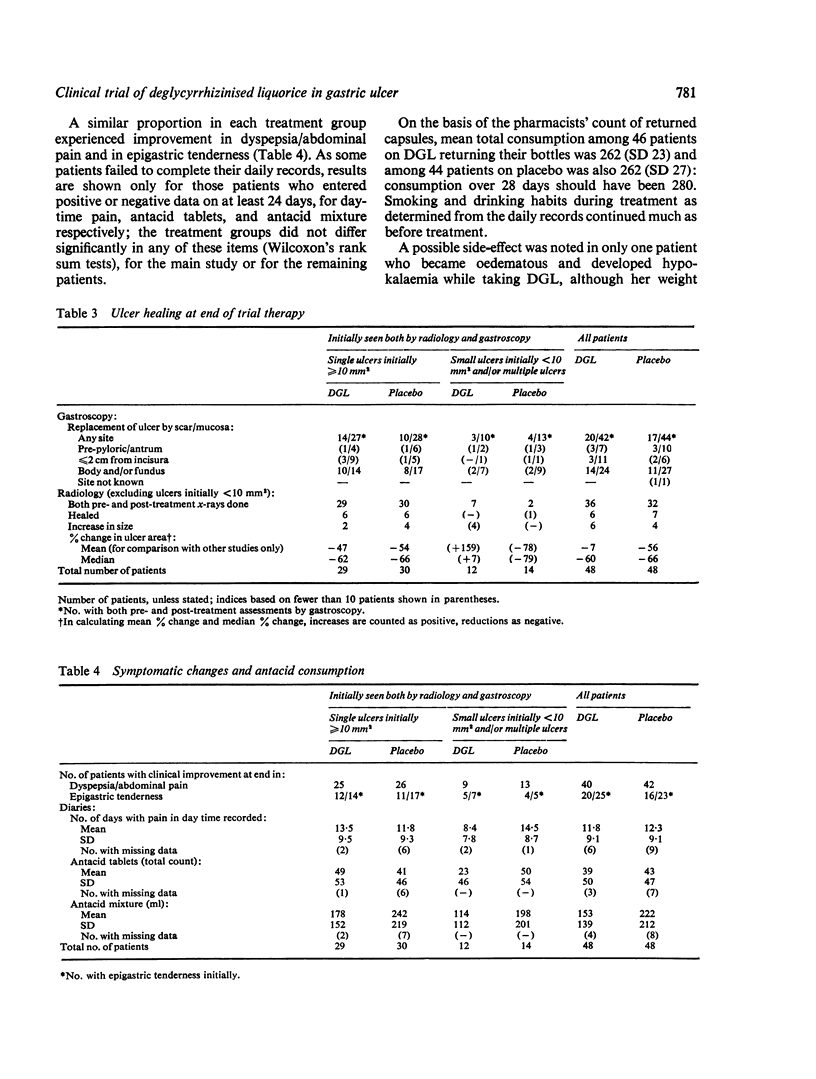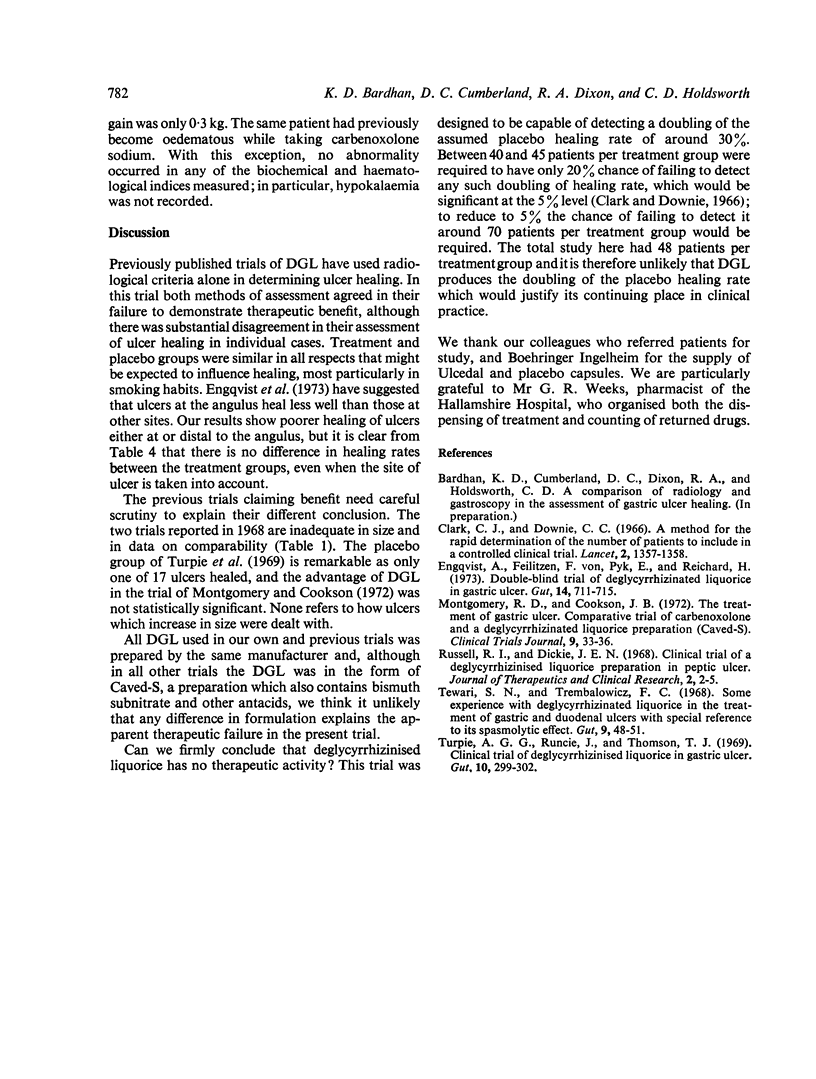Abstract
Ninety-six patients with gastric ulcer were randomly allocated to treatment either with deglycyrrhizinised liquorice or placebo. After four weeks no differences were found between the treatment groups in the proportions with complete healing, whether assessed by gastroscopy or radiology, or in the percentage reduction in ulcer area, or in clinical improvement.
Full text
PDF



Selected References
These references are in PubMed. This may not be the complete list of references from this article.
- Clark C. J., Downie C. C. A method for the rapid determination of the number of patients to include in a controlled clinical trial. Lancet. 1966 Dec 17;2(7477):1357–1358. doi: 10.1016/s0140-6736(66)92098-8. [DOI] [PubMed] [Google Scholar]
- Engqvist A., von Feilitzen F., Pyk E., Reichard H. Double-blind trial of deglycyrrhizinated liquorice in gastric ulcer. Gut. 1973 Sep;14(9):711–715. doi: 10.1136/gut.14.9.711. [DOI] [PMC free article] [PubMed] [Google Scholar]
- Tewari S. N., Trembalowicz F. C. Some experience with deglycyrrhizinated liquorice in the treatment of gastric and duodenal ulcers with special reference to its spasmolytic effect. Gut. 1968 Feb;9(1):48–51. doi: 10.1136/gut.9.1.48. [DOI] [PMC free article] [PubMed] [Google Scholar]
- Turpie A. G., Runcie J., Thomson T. J. Clinical trial of deglycyrrhizinized liquorice in gastric ulcer. Gut. 1969 Apr;10(4):299–302. doi: 10.1136/gut.10.4.299. [DOI] [PMC free article] [PubMed] [Google Scholar]


